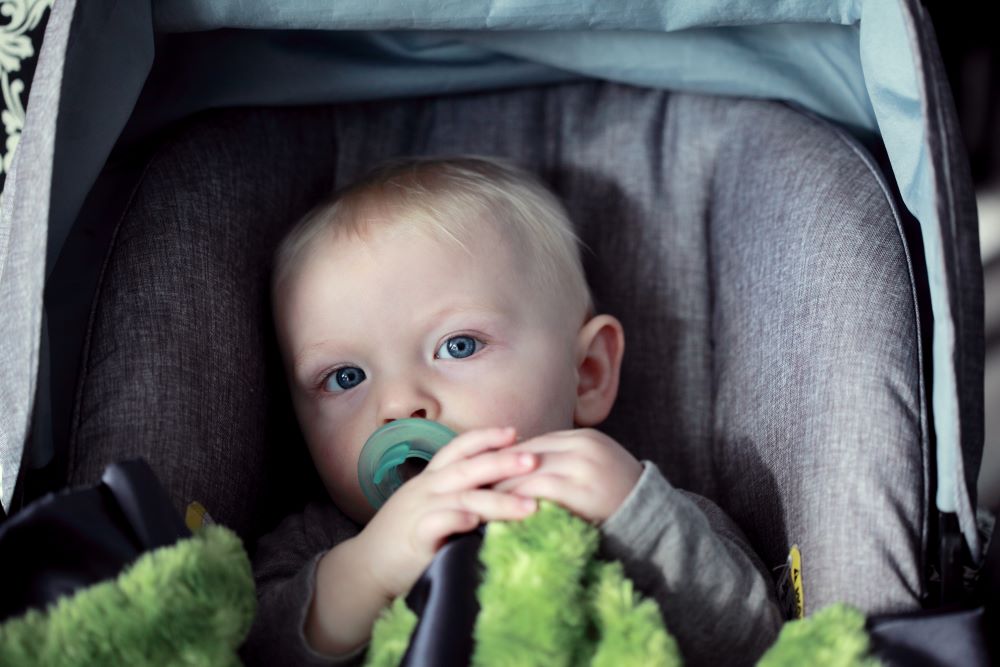Is Your Child's Car Seat Safe After a Crash?

Car accidents can be frightening and dangerous experiences, and when you have children on board, their safety becomes your top priority. You need to know if your child’s car seat is safe after a crash.
One crucial aspect of child safety in a vehicle is the proper use of car seats. While car seats are designed to protect your child in the event of a collision, it's essential to know what steps to take to ensure their continued safety after a crash.
Many parents wonder if their car insurance will cover the cost of replacing a child's car seat after an accident. The answer depends on several factors, including your insurance policy and the circumstances of the crash. We’ll explore that topic in this blog.
Inspecting your child's car seat after a crash
After a car accident, it's crucial to assess the condition of your child's car seat to ensure it is still safe for use.
Even if the seat appears undamaged, there may be hidden issues that compromise its safety.
Here are the steps to follow:
Examine for visible damage
- Inspect the car seat thoroughly for any visible signs of damage. Look for cracks, dents, or deformation in the plastic shell, as well as loose or broken parts.
- Check the harness straps and buckles for any fraying, cuts, or damage. Ensure they are still properly secured.
- Verify that the chest clip is intact and functioning correctly.
Check for structural integrity
If the car seat was involved in a significant collision, it's advisable to replace it, even if there are no visible signs of damage. The force of an impact can weaken the structural integrity of the seat.
Some car seat manufacturers provide guidelines on when to replace a seat after a crash. Refer to your car seat's manual for specific recommendations.
Verify the expiry date
Car seats have expiration dates to ensure their safety and effectiveness. Check the label on your child's car seat to ensure it is not past its expiration date. If the seat is expired, it's time to replace it, regardless of whether it was in a crash.
Contact the manufacturer
If you are unsure about the safety of your child's car seat after an accident or need clarification, contact the manufacturer. They can provide guidance on whether the seat should be replaced.
Does car insurance cover replacing a car seat after an accident?
Many parents wonder if their car insurance will cover the cost of replacing a child's car seat after an accident. The answer depends on several factors, including your insurance policy and the circumstances of the crash.
Policy coverage
Some auto insurance policies offer coverage for child car seats as part of their liability or comprehensive coverage. Check your policy to see if this coverage is included.
Criteria for Coverage
Insurance companies may have specific criteria for covering the replacement of a car seat after a collision. Common criteria include:
- The car seat was in use during the accident.
- The accident meets certain criteria, such as being severe enough to warrant replacement.
- The car seat manufacturer recommends replacement after a crash.
Document the accident
To claim coverage for a replacement car seat, you may need to provide documentation of the accident, including a police report and photos of the damage.
Contact your insurance provider
If you believe your policy covers car seat replacement, contact your insurance provider promptly. They can guide you through the claims process and provide information on what is required.
Safety tips for car seats
Ensuring your child's car seat is safe after a crash is vital, but it's equally important to use the seat correctly from the beginning. Here are some safety tips for car seats:
- Choose the right car seat
Select a car seat that is appropriate for your child's age, weight, and height. Follow the manufacturer's guidelines for sizing. - Install the car seat properly
Incorrect installation is a common mistake. Use the seat's manual and follow installation instructions carefully. If in doubt, seek professional help or use a certified car seat inspection station. Your child’s car seat must be securely installed to prevent its movement during an accident. - Harness and straps
Ensure the harness straps are snug and secure, with no slack. The chest clip should be at armpit level. Adjust the harness as your child grows to maintain a proper fit. - Rear-facing vs. forward-facing
Keep your child in a rear-facing car seat for as long as possible, following the seat's weight and height limits. Rear-facing seats provide better protection for young children in a collision. - Regularly inspect and clean
Regularly check your child's car seat for loose or damaged parts. Clean the seat according to the manufacturer's instructions to maintain its integrity. - Avoid aftermarket accessories
Avoid using aftermarket products, such as padded seat covers or strap covers, as they can interfere with the seat's safety features. - Replace expired or recalled seats
Do not use a car seat that has passed its expiration date or has been recalled. Register your car seat with the manufacturer to receive recall notifications. - Teach older children safety rules
As your child grows, educate them about the importance of wearing seat belts and following safety rules in the car.
Ensuring your child's car seat is safe after a crash is a critical responsibility for every parent or caregiver. Regularly inspecting the seat, following safety guidelines, and staying informed about your car insurance coverage are essential steps to protect your child on the road.
By prioritizing safety and taking the necessary precautions, you can provide your child with the best possible protection in the event of an accident. Remember that when in doubt, consult with the car seat manufacturer or seek assistance from a certified expert to guarantee your child's safety while travelling in a vehicle.



